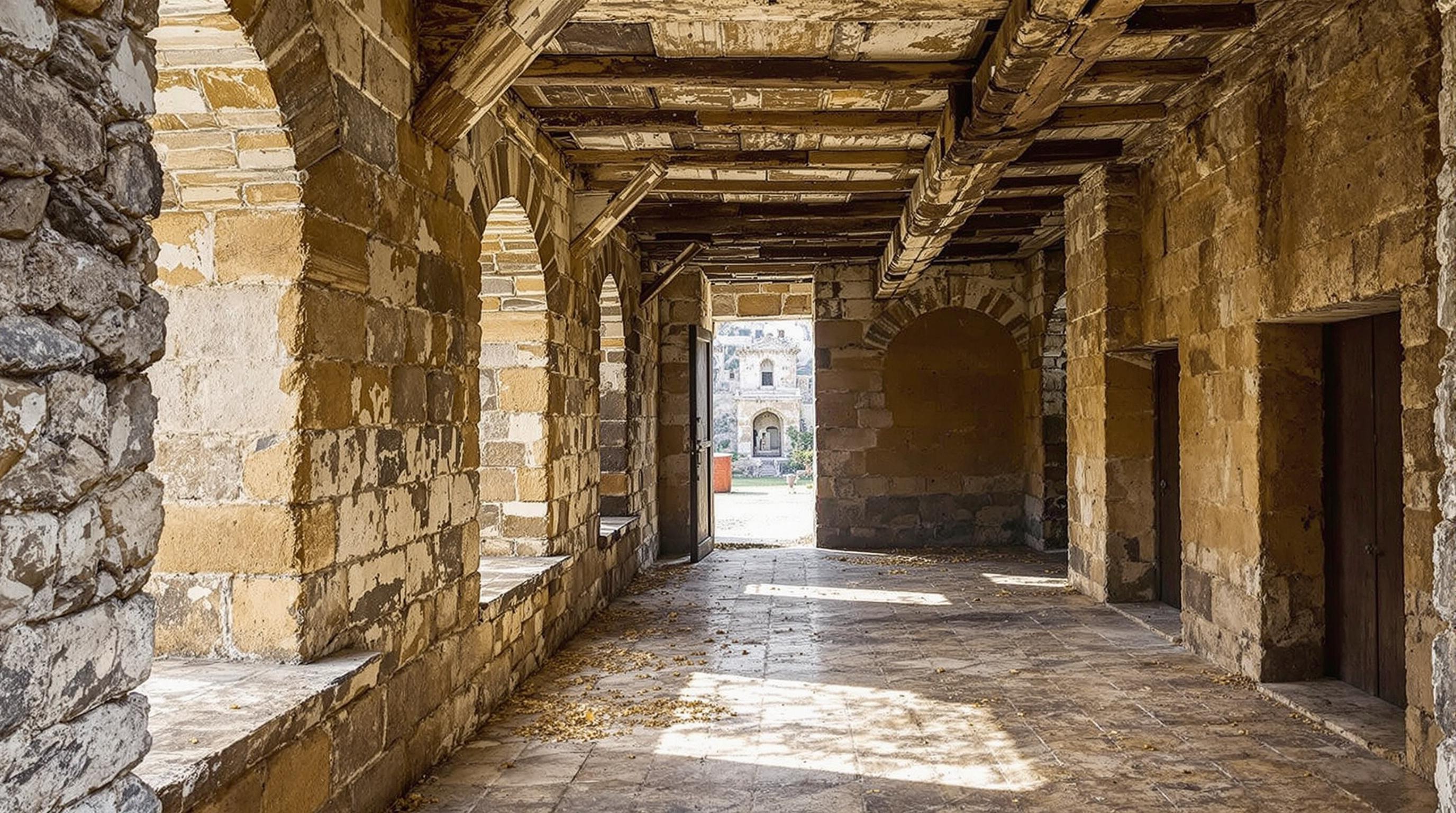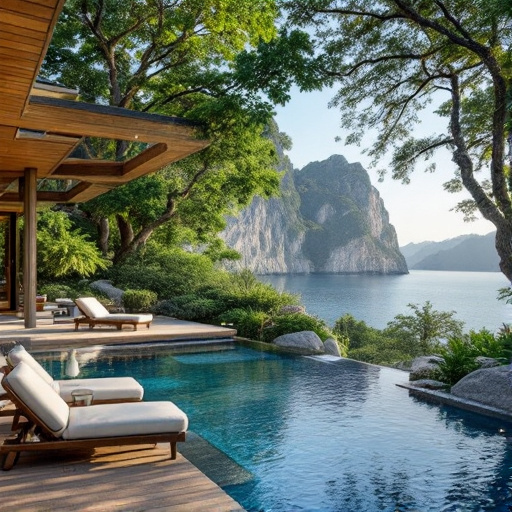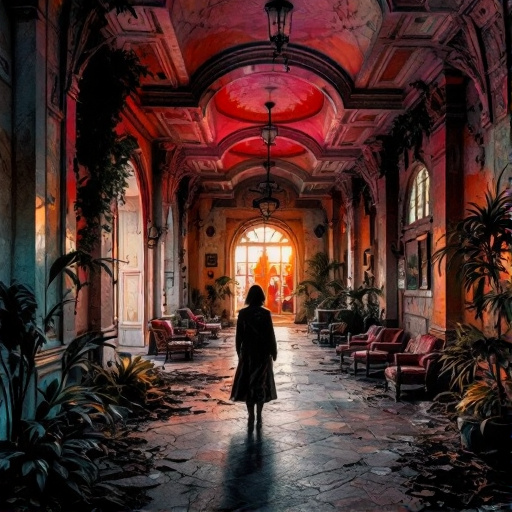Featured Articles
- Chasing Shadows: The Allure of Abandoned Luxury Resorts and Their Untold Stories
- Hidden Havens: Discovering the World's Most Secretive and Exclusive Getaways
- Hidden Luxury: Unveiling the World’s Most Surreal and Obscure Exclusive Travel Retreats
- Journey to Forgotten Monasteries: Exploring Rare Sanctuaries That Blend Solitude with Timeless Heritage
- Top 8 Ultra-Luxe Private Jet Experiences Launched in the Last 5 Years: A Definitive Review and Ranking
Chasing Shadows: The Allure of Abandoned Luxury Resorts and Their Untold Stories
Chasing Shadows: The Allure of Abandoned Luxury Resorts and Their Untold Stories
Abandoned luxury resorts tell haunting tales of opulence turned desolate, each containing secrets waiting to be uncovered. This article explores the allure behind these ghostly remnants, intertwining stories of human ambition with the bittersweet echo of dreams lost to the passage of time.
The Resilience of Nature and Memory
Imagine standing at the entrance of a once-glorious luxury resort, where marble lobbies now lie dust-covered and overrun by nature's embrace. One such monument to this allure is the Hotel del Salto in Colombia, perched on a cliff overlooking the Tequendama Falls. Once a popular escape for the elite, it now stands silent, a canvas for urban explorers and photographers drawn by its beauty and tragic backstory. The hotel closed its doors in the 1990s but lives on through stories of its former guests and chilling local legends that suggest it is haunted. ("The Abandoned Hotel With an Ugly History," BBC Travel)
Statistics of Abandonment
According to recent studies, nearly 60% of luxury hotels built in the last 30 years are ceasing operation within 10 years, often due to market saturation or economic downturns. For those of us fascinated by abandoned structures, this represents a treasure trove of untold stories and lost potential. As travelers, we can’t help but wonder: what drove the guests away? Would they return if given the chance?
The Rich Tapestry of History
Each abandoned resort is a unique tapestry woven from the lives intertwined within its walls. Let’s take a trip to the abandoned Ritz-Carlton in Puerto Rico, which opened in 1997 and shuttered a mere five years later due to financial difficulties. Today, its once-grand ballrooms and terraces overlook a serene coastline, enticing the increasingly adventurous urban explorer. They don’t just seek a thrill; they search for the spirits of the past, eager to capture the moment life once thrived there.
Conversations Built on Shared Dreams
Speaking of spirits, you may think of ghosts, but these places are alive with the memories of guests, staff, and owners who had high hopes. People like Mary, the former waitress at the Ritz-Carlton, fondly remember luxurious banquets, laughter echoing through hollow halls, and couples taking their vows with the sunset as their backdrop. As we sift through the echoes of the past, we find that each whisper adds depth to the allure of abandoned resorts for explorers seeking connection to a time long gone.
The Fascination of Urban Exploration Culture
Urban exploration, or 'urbex,' has emerged as a popular subculture where adventurers seek to uncover hidden urban landscapes. This subculture is drawing younger generations, particularly those aged 16 to 30, who document their findings through Instagram or YouTube. The hashtag #AbandonedPlaces has over 1.5 million posts, a statistic that reveals a significant appetite for the exploration of forgotten spaces. But for seasoned explorers, each adventure is profoundly personal, a journey not just through physical space but through time.
From Luxury to Languishing: A Case Study
Take, for instance, the case of the luxury resort, "The Atlantis" in the Bahamas, which, despite being a thriving hotspot, faced the wrecking ball due to a combination of external pressures. In 2001, after a steep decline in both tourism and funding, the resort was transformed from paradise to an emblem of ruin. Today, remnants of its aquatic-themed architecture are submerged underwater, whispering secrets of grandeur to the curious and brave snorkelers who dive the depths of nostalgia.
The Heartfelt Reminiscence: A Personal Account
Allow me to share a personal story. At 27, I embarked on a quest to an abandoned resort in the Caribbean, enticed by its blue hues and crashing waves. On my visit, I stumbled upon artifacts, from rusted pool chairs to faded cocktail menus, which painted a vivid picture of past celebrations. There I imagined a bride nervously twirling her bouquet, guests clinking glasses, laughter ringing through the humid air—a melancholic reminder that we’ve all chased our own shadows at some point, yearning for what once was.
The Ripple Effects of Abandonment
Interestingly, the abandonment of luxury resorts also fosters broader socio-economic consequences. Entire communities can be affected when the main attraction closes down, leading to job loss and decreased local tourism. This chain reaction can often take years for communities to recover from, forcing locals to explore alternative avenues for income. The story of the abandoned resorts often serves as a cautionary tale about economic cycles and the fragility of luxury in our fast-paced world.
Development vs. Preservation: A Torn Dilemma
As explorations of these sites increase, often the conversation turns towards preservation versus development. The irony is palpable. While many urban explorers advocate for preservation and the telling of these stories, developers look at the untapped potential of real estate. For example, the abandoned “Club Med” in Lindos, Greece, was once earmarked for restoration. However, after several failed attempts, it stands today as a haunting structure at the mercy of nature, captivating those who venture there with the promise of yesteryear.
A Humorously Dark Perspective
Imagine walking through the dilapidated halls of a luxury resort, only to find a long-abandoned disco ball sparkling in your flashlight’s glow. What a way to introduce your friends to “the dance of the dead”! With disco-infused horror flicks on the rise, one can’t help but chuckle at the unsettling idea of a disco revival for ghosts. If they can’t have a party, why not let them carry on with a good old haunting?
Social Media as the Modern-Day Herald
Once the bastion of adventure for a select few, urban exploration has now found its place on social media, allowing contemporary explorers to share their escapades with the world. Sites like Instagram and TikTok have become digital scrapbooks, showcasing the beauty of decay in a way that is both eerie and awe-inspiring. For instance, the "Rochelle Hotel" in Australia, with its peeling wallpaper and surrendered luxury, has gained a following as explorers post their discoveries online, inviting others to share in their quest.
Rekindling the Romance of Yesteryears
Much like time itself, the stories of abandoned luxury resorts are woven into a larger narrative of existence—yesterday's dreams echoing in today's searches for meaning. Where do we fit into this tapestry? Seeking remnants of grandeur, we acknowledge the impermanence not only of buildings but of life and its fleeting essence. Through the exploration of the remains, we ask ourselves if we, too, are chasing shadows, drawn by the light of what once was.
A Call to Preserve Memories
As enthusiastic explorers, storytellers, and communities, it’s our responsibility to preserve these memories for future generations. These sites hold within them not just the history of tourism but of human ambition, creativity, resilience, and ultimately, the cycle of life. Instead of letting them decay further, a movement towards responsible exploration and preservation can facilitate the potential beauty still locked within their walls.
The Stories We Leave Behind
As I think back to my expedition at the Caribbean resort, I can't help but realize the stories we leave behind are often more captivating than those we create in luxury. Each abandoned structure carries the weight of dreams unfulfilled, choices not made, and life as it splintered away from reality. In chasing shadows, we delve into a shared human experience, celebrating the tapestry of our fears, hopes, and the ever-essential pursuit of uncovering who we truly are.
Conclusion: The Continuum of Exploration
Ultimately, the allure of abandoned luxury resorts draws us in for myriad reasons—nostalgia, curiosity, adventure, or perhaps the simple desire to connect with stories that often go untold. As we travel through their ghostly halls, we become part of their narrative, etching our own footprints into the fabric of time. So, the next time you come across a crumbling structure, remember that each broken tile and faded drape may hold a secret worth discovering, for in chasing shadows, we may just unveil the light of understanding and connection that binds us all.




